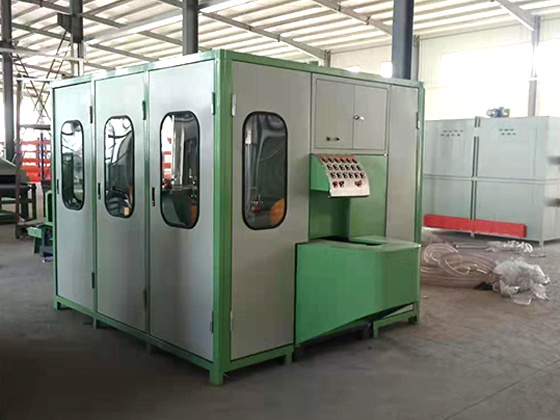The main characteristics of rusty steel pipe
Release time:
2021-03-18
The stainless steel grade “304" (S30400) is the name of the grade in the American stainless steel standard (such as ASTM standard). It is a typical grade of 18-8 Cr―Ni Austrian stainless steel. Due to its excellent overall performance, it is widely used, and its production and sales volume account for about 80% of Austrian stainless steel.

The main characteristics of stainless steel pipe
The stainless steel grade “304" (S30400) is the name of the grade in the American stainless steel standard (such as ASTM standard). It is a typical grade of 18-8 Cr―Ni Austrian stainless steel. Due to its excellent overall performance, it is widely used, and its production and sales volume account for about 80% of Austrian stainless steel.
The main characteristics of 304(06Crl9Nil0) steel
1. It has excellent stainless and corrosion resistance and good resistance to intergranular corrosion.
P-oxidizing acids, such as nitric acid with a concentration of ≤65% below the boiling temperature, have strong corrosion resistance.It also has good corrosion resistance to alkali solutions and most organic and inorganic acids.
2 It has excellent hot and cold processing and forming properties.
It can process and produce various products of plate, tube, wire, belt, and type, and is suitable for the manufacture of cold heading, deep punching, and deep tensile forming parts.
3. Good low temperature performance.
Under the condition of -180℃, the strength, elongation, and cross-section shrinkage are all very good.Since there is no brittle transition temperature, it is often used at low temperatures.
4. It has good welding performance.
The usual welding method can be used for welding, and no heat treatment is required before and after welding.
Deficiencies in the performance of 304 steel
Large-section steel parts are sensitive to intergranular corrosion after welding; they are very sensitive to stress corrosion in c1―containing water (including wet atmosphere); their mechanical strength is low and their cutting performance is poor.
Due to the performance shortcomings of 304 steel, people find ways to promote strengths and avoid weaknesses in production and use, try their best to develop its excellent performance, and overcome its shortcomings.Therefore, through research and development, its chemical composition was adjusted according to the specific requirements of different use environments or conditions, and a 304 derivative grade that meets the requirements of certain characteristics was developed.
The comparison of the grade 304 and its derivative grades in the stainless steel grade standard ASTM A959―04 of the American Association for Materials and Testing with the corresponding grades in stainless steel standards such as Japan JIS, China GB, international ISO, and European EN is listed.Table 2 and Table 6 list the chemical composition of each grade in the corresponding standard.
In ASTMA959-04, there are 10 grades of 304 and its derivatives.There are also 10 in the Japanese JIS standard, but 6 can correspond to ASTM grades. The other 4 grades (SUS304J1, SUS304J2, SUS304J3, SUS304Cu) should be 304 derivative grades developed by JIS itself.
Looking at the chemical composition of 304 and derived grades, it can be considered that the so-called derived grades are 304 grades that have undergone certain adjustments to the chemical composition of 304 and have produced variations.For example:
Carbon content: Reduce or increase the carbon content.304L is ultra-low carbon 304 steel.Reducing the carbon content can improve the corrosion resistance, especially the intergranular corrosion sensitivity of 304 steel after butt welding. Under the conditions of meeting the mechanical strength requirements, it can be used to manufacture welded parts with large cross-section sizes.304H, the carbon content is increased to 0.10%, the strength of 304 steel is increased, and the austenitic is more stable, which is more suitable for use in low temperature environments and non-magnetic components than 304 steel.
Nitrogen content: Add nitrogen.304N (SUS304N1), XM-21 (SUS304N2), 304LN, etc. are all.Due to the strengthening effect of nitrogen solution, the strength of 304 and 304L steels is improved without significantly reducing the plasticity and toughness of the steel. At the same time, the resistance of steel to intergranular corrosion, pitting corrosion and crevice corrosion has been further improved.
Copper content: Add a certain amount of copper.Copper makes austenite more stable.On the one hand, the rust resistance and corrosion resistance of steel can be improved, especially the corrosion resistance of reducing media (such as sulfuric acid) is better; on the other hand, the strength of steel and the tendency to cold work hardening can be reduced, and the plasticity of steel can be improved.Such as S30430 (06Crl8Nil9Cu3, SUSXM7), SUS304J3 (06Crl8Nil9Cu2), etc., these steels can obtain greater cold deformation under the action of smaller deformation force than 304, and are more suitable for cold heading, cold extrusion for fasteners or deep punching, stretching and other purposes.
Keywords:
Related Information











